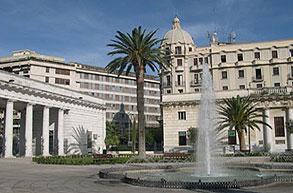


All the structures

Located at the centre of the Tavoliere plain, Foggia is the provincial capital of a Puglia province, situated at the junction of important roads.
Stop at Foggia for a visit to the Cathedral, the Civic Museum, the Municipal Gallery and the Art Nouveau style Post Office building. William the Good ordered the construction of the Cathedral in 1172, but it was almost entirely rebuilt in the eighteenth century.
In the museum you can see stone carvings; in the archaeological area, prehistoric objects, vases, pottery and ancient coins.
Foggia and its entire province are characterized by the variety of landscape. Here, nature has provided gentle headlands where typical towns are located, lovely plains, green forests and a marvellously blue sea bordering cliffs in countless forms.
At the foot of the Gargano lies the sunny town of Manfredonia, founded in 1256 by King Manfred whose greatest legacy was to leave the city his name. Manfredonia is much visited for its beaches. Manfredonia is part of the Gargano National Park.
From Manfredonia you can visit Vieste. Situated on the coast, Vieste is a picturesque, small white town to explore. An old fishing town, it is a reminder of authentic sea flavours and of fishermen’s lives. Lovers of seascapes should get up early and make a dawn visit to the Grotta Campana near Vieste. The rising sun creates magical light effects that sensitive souls will appreciate.
In addition to the characteristic domed houses of Peschici, pay a visit to the less well known but wonderful Marzini pinewoods that border the sandy beach. This is the only mainland European town where one can see the sun both rise and set in the sea.
Boats take you to the Tremiti islands, Foggia’s greatest jewels. Visit the ruins of the ancient abbey, but most of all take the time to notice the wonders of the natural environment, the shapes of the cliffs – architectural forms that only nature knows how to create.
Lovers of nature in its purest form can see wild deer in the Umbra Forest Nature Park.